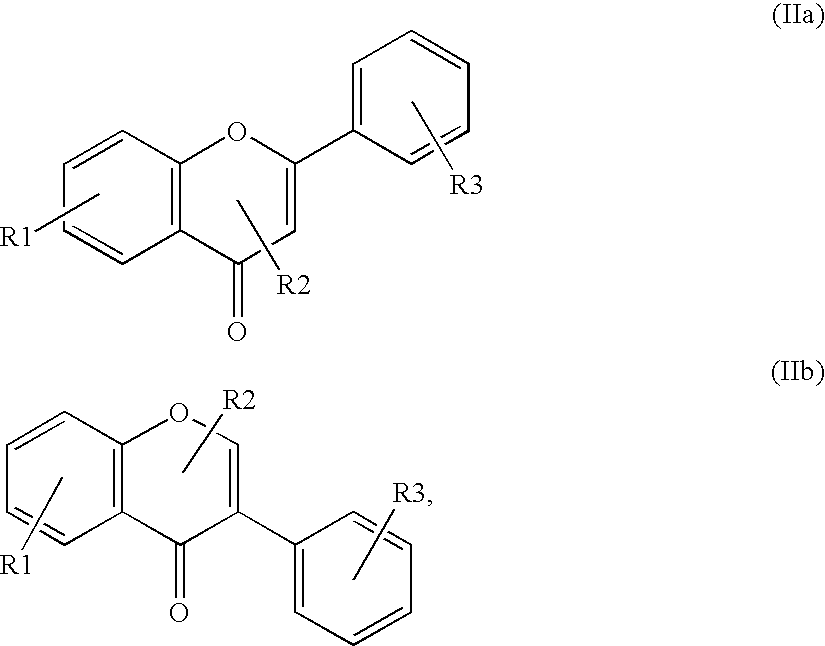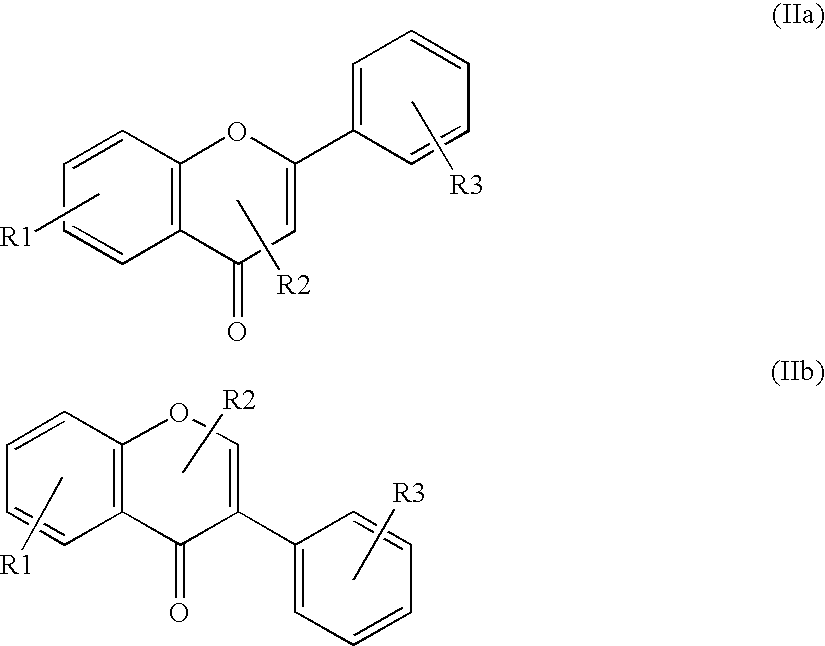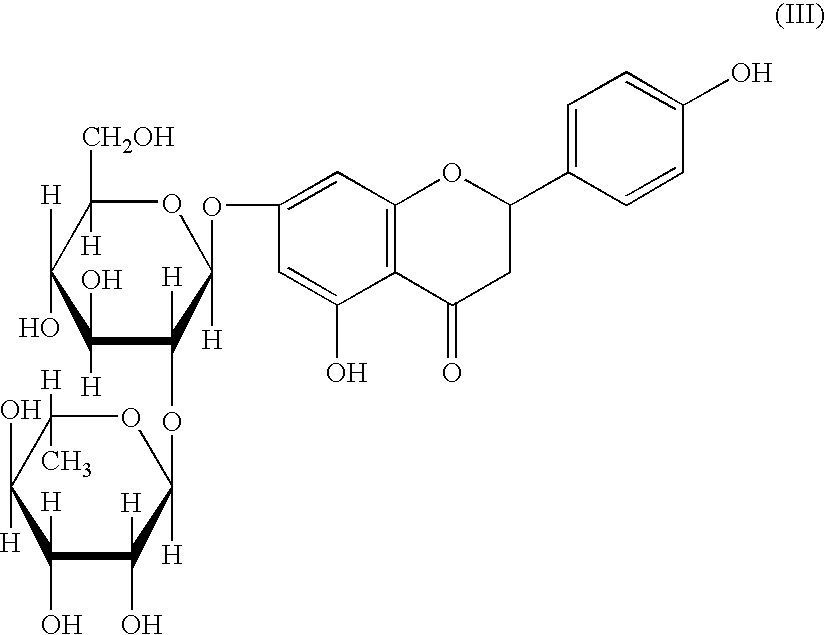Novel flavone glycoside derivatives for use in cosmetics, pharmaceuticals and nutrition
a technology of isoflavone glycoside and new biologically active flavone, which is applied in the direction of sugar derivatives, biocide, food preparation, etc., can solve the problems of poor bioavailability, senescence, and ultimately cell death, and achieve improved biological availability, improved effect, and/or a broader action spectrum
- Summary
- Abstract
- Description
- Claims
- Application Information
AI Technical Summary
Benefits of technology
Problems solved by technology
Method used
Image
Examples
example 1
Preparation of 6-O-cis-9,trans-11-octadecadienoyl naringin
[0063]2 g of D-(−)-naringin, 5 g of CLA (Edenor® UKD 6010), 12 g of molecular sieve, 15 ml of t-butanol and 10 g of immobilized lipase B from Candida antarctica were incubated for 40 hours with stirring (magnetic stirrer, 100 r.p.m.) at 60° C. in a 250 ml Erlenmeyer flask. The reaction was monitored by thin-layer chromatography (silica gel KG60 plates with fluorescence indicator; mobile solvent: ethyl acetate / methanol 10:1 v / v; visualization: UV detection and with acetic acid / sulfuric acid / anisaldehyde (100:2:1 v / v / v) immersion reagent. The product was extracted with 20 ml of n-hexane and purified by column chromatography (silica gel F60; mobile solvent: ethyl acetate / methanol 10:1 v / v). Rf value: 0.47 (ethyl acetate / methanol 10:1).
example 2
Preparation of 6-O-naringin-(3-phenylpropionic acid)-ester
[0064]5.8 g of naringin, 1.5 g of 3-phenylpropionic acid, 3.7 g of molecular sieve, 15 ml of t-butanol and 11 g of immobilized lipase B from Candida antarctica were incubated for 24 hours at 60° C. / 100 r.p.m. in a 250 ml flask. The reaction was monitored by thin-layer chromatography (silica gel 60 F254; mobile solvent: ethyl acetate / methanol 10:1 v / v; visualization by UV detection). On termination of the reaction, the conversion based on naringin amounted to 20%. The product was extracted with 20 ml of n-hexane and purified by column chromatography (silica gel F60; mobile solvent: ethyl acetate / methanol 10:1 v / v). Rf value: 0.16 (ethyl acetate / methanol 10:1 v / v). Yield: 0.85 g.
[0065]The column chromatographic separation was not optimized. Besides fractions containing the pure product, mixed fractions containing unreacted naringin were obtained. Only those fractions from the column chromatography which contained only the requi...
example 3
Preparation of 6-O-naringin-(p-Cl-phenylacetic acid)-ester
[0066]5.8 g of naringin, 1.7 g of p-chlorophenylacetic acid, 3.8 g of molecular sieve, 15 ml of t-butanol and 11 g of immobilized lipase B from Candida antarctica were incubated for 24 hours at 60° C. / 100 r.p.m. in a 250 ml flask. The reaction was monitored by thin-layer chromatography (silica gel 60 F254; mobile solvent: ethyl acetate / methanol 10:1 v / v; visualization by UV detection). On termination of the reaction, the conversion based on naringin amounted to 20%. The product was extracted with 20 ml of n-hexane and purified by column chromatography (silica gel F60; mobile solvent: ethyl acetate / methanol 10:1 v / v). Rf value: 0.20 (ethyl acetate / methanol 10:1 v / v). Yield: 0.50 g.
[0067]The column chromatographic separation was not optimized. Besides fractions containing the pure product, mixed fractions containing unreacted naringin were obtained. Only those fractions from the column chromatography which contained only the re...
PUM
| Property | Measurement | Unit |
|---|---|---|
| Composition | aaaaa | aaaaa |
Abstract
Description
Claims
Application Information
 Login to View More
Login to View More - R&D
- Intellectual Property
- Life Sciences
- Materials
- Tech Scout
- Unparalleled Data Quality
- Higher Quality Content
- 60% Fewer Hallucinations
Browse by: Latest US Patents, China's latest patents, Technical Efficacy Thesaurus, Application Domain, Technology Topic, Popular Technical Reports.
© 2025 PatSnap. All rights reserved.Legal|Privacy policy|Modern Slavery Act Transparency Statement|Sitemap|About US| Contact US: help@patsnap.com



